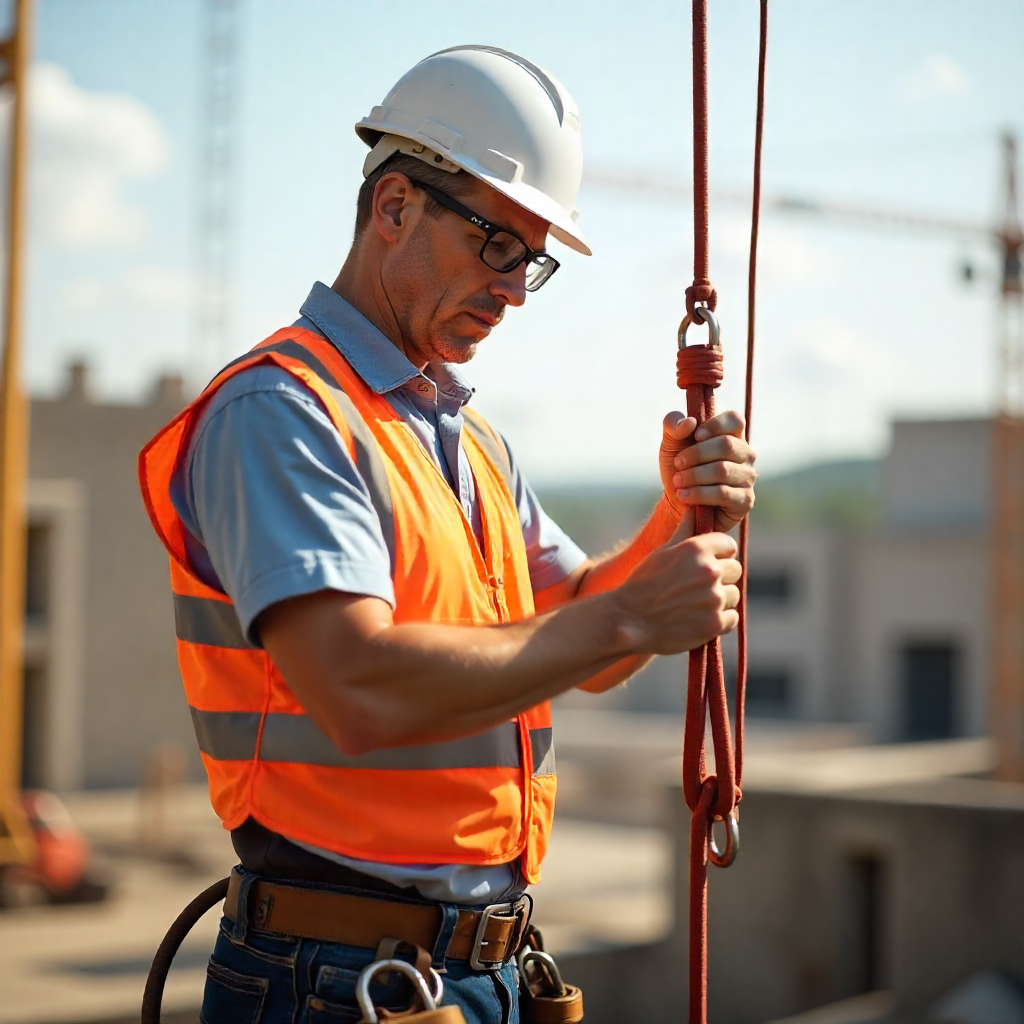
Rigging is one of the most critical activities in industries such as construction, oil and gas, and shipping. It involves lifting and moving heavy loads with the use of specialized equipment including slings, hooks, and chains. While rigging makes work efficient, it also comes with high risks. A single failure in equipment or a breakdown in communication can cause serious injury, property damage, or even loss of life.
To manage these risks, rigging equipment must be used with a strong focus on safety. This includes regular inspections, respecting load limits, effective teamwork, and proper maintenance. Below we explore the essentials of rigging safety that every workplace should apply.
Inspection of Slings, Hooks, and Chains
Rigging equipment is constantly under stress and can deteriorate quickly if not monitored. Before every lifting operation, equipment must be inspected carefully to confirm that it is safe for use.
Key inspection checks include:
-
✅ Slings: Look for cuts, fraying, abrasions, chemical burns, broken wires, or kinks.
-
✅ Hooks: Check for cracks, bends, deformation, or throat openings that have stretched beyond limits.
-
✅ Chains: Examine each link for corrosion, twisting, stretching, or excessive wear.
Any defective equipment must be tagged and immediately removed from service. Never attempt to “make do” with damaged gear — this compromises safety for the entire team.
Safe Working Load Limits
Every sling, hook, shackle, and chain has a safe working load (SWL) defined by the manufacturer. Exceeding this limit is one of the leading causes of rigging failures.
To ensure compliance:
-
✅ Always verify the weight of the load before lifting.
-
✅ Respect the safe working load limits listed on equipment.
-
✅ Consider the angle of lift, since slings at an angle carry more stress than those used vertically.
-
✅
Plan lifts with a margin of safety. If in doubt, select stronger equipment.
Working within safe limits reduces the risk of catastrophic failures and creates confidence in lifting operations.
Communication Between Riggers and Operators
Successful rigging is a team effort. Without clear communication, even experienced riggers and operators can make dangerous mistakes.
Best practices for communication include:
-
✅ Use standardized hand signals or radios to give instructions.
-
✅ Assign only one person as the signaler to avoid confusion.
-
✅
Ensure the signaler is always visible to the operator.
-
✅ Conduct a pre-lift briefing to review the lifting plan, hazards, and responsibilities.
Good communication builds trust and ensures that every movement of the load is intentional and understood by all parties.
Avoiding Standing Under Loads
One of the golden rules of rigging is simple: never stand under a suspended load. Even when equipment is inspected and operators are skilled, accidents can still happen. A sling may snap, a hook may slip, or the load may shift.
To stay safe:
-
✅ Establish exclusion zones where loads will be lifted or moved.
-
✅ Clearly mark these areas to keep unauthorized persons out.
-
✅ Never leave a load hanging in the air unattended.
By enforcing this rule strictly, the risk of serious injuries or fatalities is greatly reduced.
Proper Storage and Maintenance
Rigging equipment must be stored and maintained properly to keep it safe and reliable. Poor storage conditions can weaken equipment, even if it is not in use.
Storage and maintenance practices include:
-
✅ Keep synthetic slings in cool, dry areas away from chemicals and direct sunlight.
-
✅ Lubricate chains and wire ropes regularly to prevent rust.
-
✅ Store equipment on racks or hooks rather than leaving it on the floor.
-
✅ Follow manufacturer’s maintenance guidelines and replace worn-out gear rather than repairing it improperly.
Proper storage extends the lifespan of equipment and ensures it is ready for safe use at all times.
Training and Competence
Rigging safety ultimately depends on the people handling the equipment. Even the best gear can fail if used incorrectly.
Organizations must ensure riggers and operators are properly trained and competent in areas such as:
-
✅
Load calculations and weight estimation
-
✅ Sling angles and load distribution
-
✅
Equipment limitations and safe working load application
-
✅ Safe lifting practices and hazard identification
Regular refresher training keeps skills sharp and ensures compliance with evolving safety standards.
Conclusion
Rigging equipment is essential for moving heavy loads, but it also poses serious risks if used incorrectly. Safety depends on thorough inspections, respecting safe working load limits, effective communication, avoiding dangerous positions, proper maintenance, and continuous training.
By applying these principles, organizations not only prevent accidents but also build a stronger safety culture where workers feel confident and protected. Rigging done right is more than lifting loads — it is about protecting lives.
 Athenatus Ricky
Athenatus Ricky